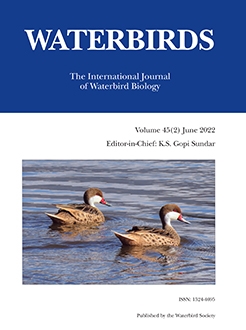Millions of wetland-dependent birds annually depend on saline lakes and associated wetlands in the western United States. Understanding the population status and trends of birds with different life histories and habitats can guide efforts to secure water resources needed to sustain bird habitats. We used a 21-year dataset to examine population trends for 24 survey units for migratory shorebirds, waterfowl, and other waterbirds at Great Salt Lake and associated wetlands. We found stable or positive trends for 36 of 37 species or groups in fall, spring, or both seasons when considering survey units in aggregate. Stable, positive, and negative trends were observed in individual survey units. Foraging technique, migration distance, and taxonomic groupings were unrelated to trend direction. Research is needed to test whether survey units represent high-quality habitat. With declining regional water resources, stable and positive aggregate trends reinforce the importance of surveyed units at Great Salt Lake and associated wetlands to wetland-dependent birds. Ensuring continuation of stable and positive trends will require identifying environmental factors—including water quantity and quality—driving trends, and require coordinated regional management and monitoring of wetland-dependent birds.
How to translate text using browser tools
8 February 2023
Twenty-One Year Trends for Shorebirds, Waterfowl, and Other Waterbirds at Great Salt Lake, Utah
Brian G. Tavernia,
Tim Meehan,
John Neill,
John Luft
ACCESS THE FULL ARTICLE

Waterbirds
Vol. 45 • No. 2
June 2022
Vol. 45 • No. 2
June 2022
Bayesian
Great Salt Lake
guilds
hydrology
saline lake
shorebird
trends analysis




